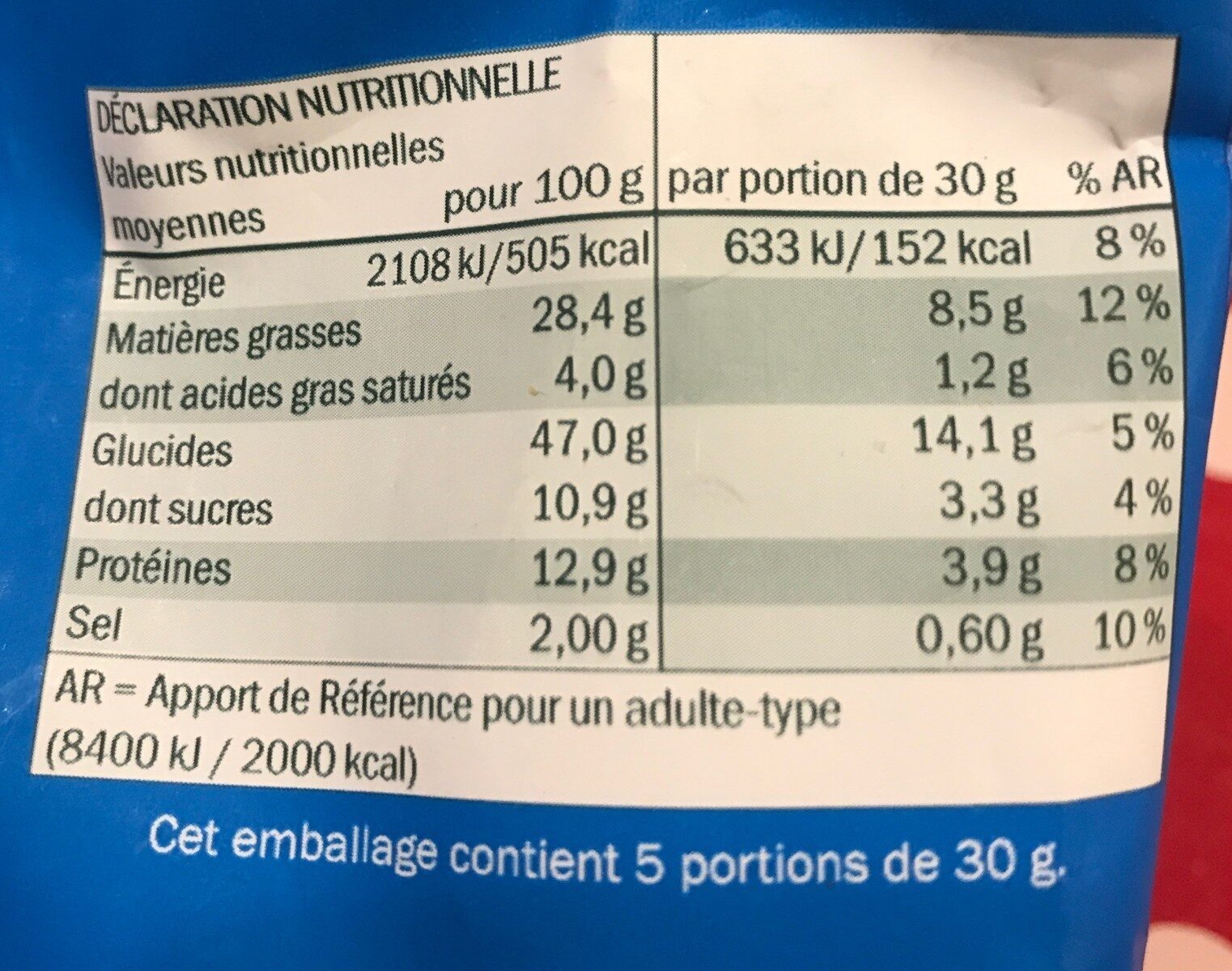Cacahuètes enrobées saveur salée - Alesto - 150 g ℮
Ambiguous barcode: This product has a Restricted Circulation Number barcode for products within a company. This means that different producers and stores can use the same barcode for different products.
×
This product page is not complete. You can help to complete it by editing it and adding more data from the photos we have, or by taking more photos using the app for Android or iPhone/iPad. Thank you!
×
Barcode: 20996697
Common name: Cacahuètes enrobées d'une pâte salée
Quantity: 150 g ℮
Packaging: Protective gas, fr:Sachet plastique
Brands: Alesto
Categories: Plant-based foods and beverages, Plant-based foods, Legumes and their products, Snacks, Legumes, Salty snacks, Nuts and their products, Nuts, Peanuts, Salted nuts, Coated peanuts, Salted peanuts, nl:pinda
Stores: Lidl
Countries where sold: France
Matching with your preferences
Environment
Carbon footprint
Packaging
Transportation
Report a problem
Data sources
Product added on by kiliweb
Last edit of product page on by roboto-app.
Product page also edited by aleene, inf, openfoodfacts-contributors, yuka.Um93K1M1OEdnUDRRa05ndjBCcU40TlpaeTdtS0RXcXhJZm9WSVE9PQ, yuka.WW80QUtvb2h2ZHNPdHRnTytRK1A4YzB0OXI3NFVscW1ETzVKSVE9PQ, yuka.WkxzZFRxWVRoOGsya3Rva3owajJ4ZEJXKzV1dGNYcUdNZW9zSVE9PQ, yuka.sY2b0xO6T85zoF3NwEKvlhN9UNfzpBPvBi3nxGq0w_iKEJfJOoh3-If3Has, yuka.sY2b0xO6T85zoF3NwEKvlkpba-vljz7BKiH4mlO04u3QD6S2QtBS_JrwLqg.










